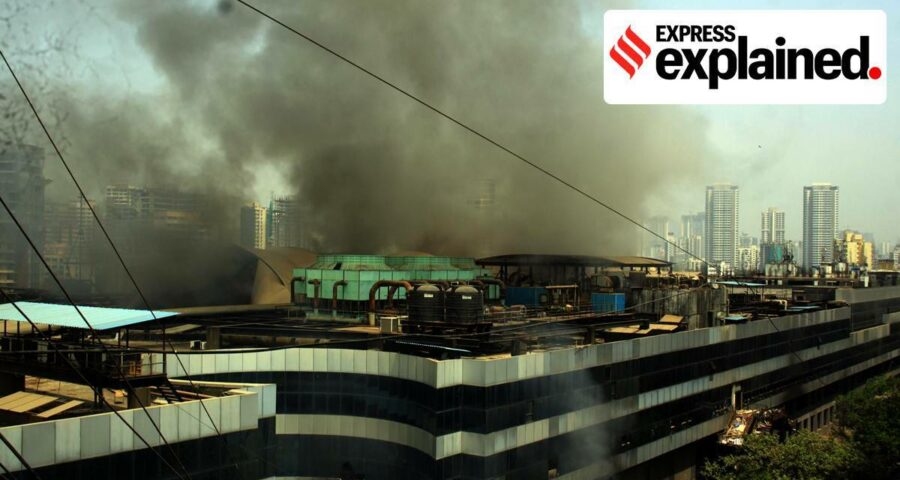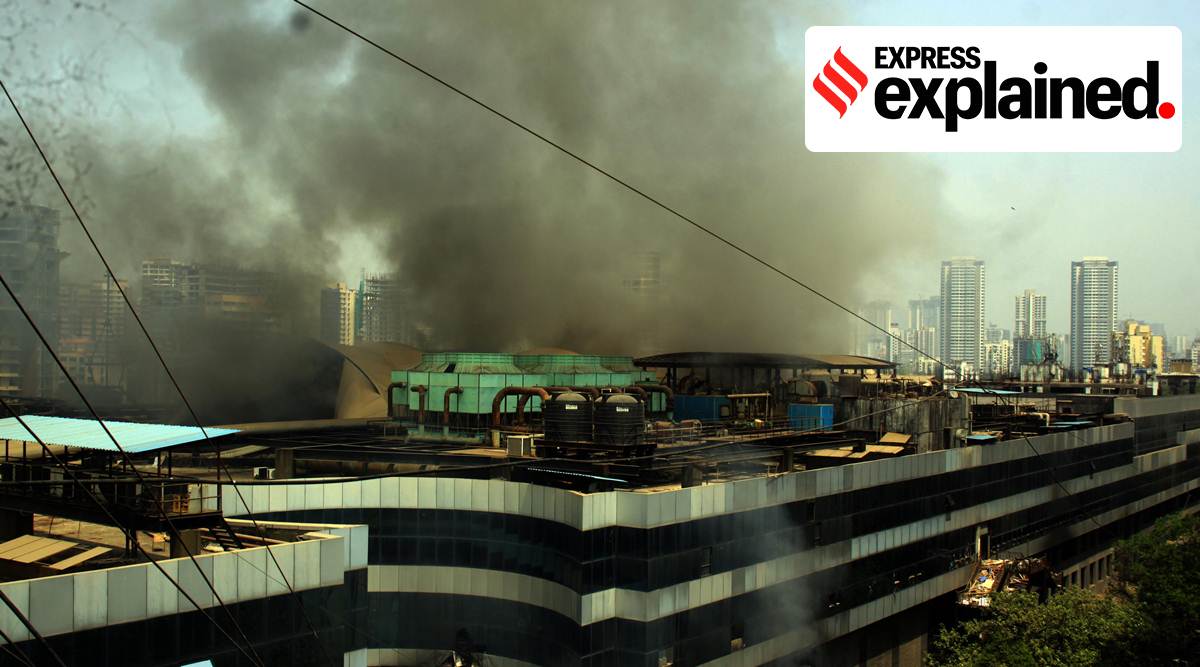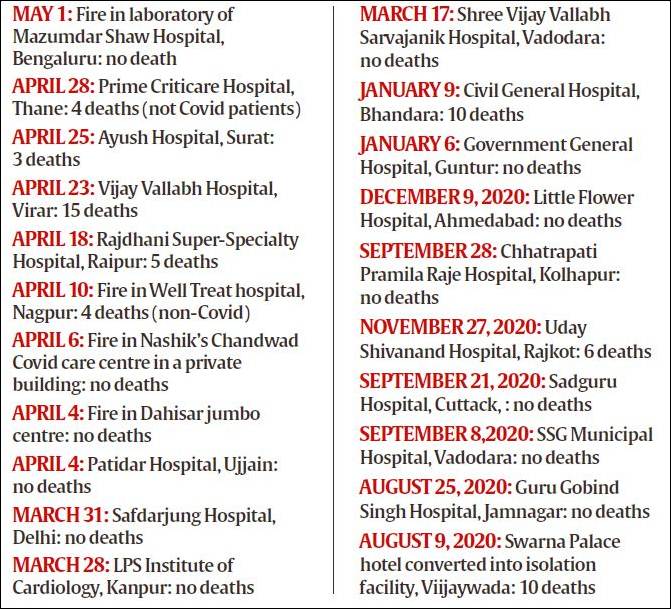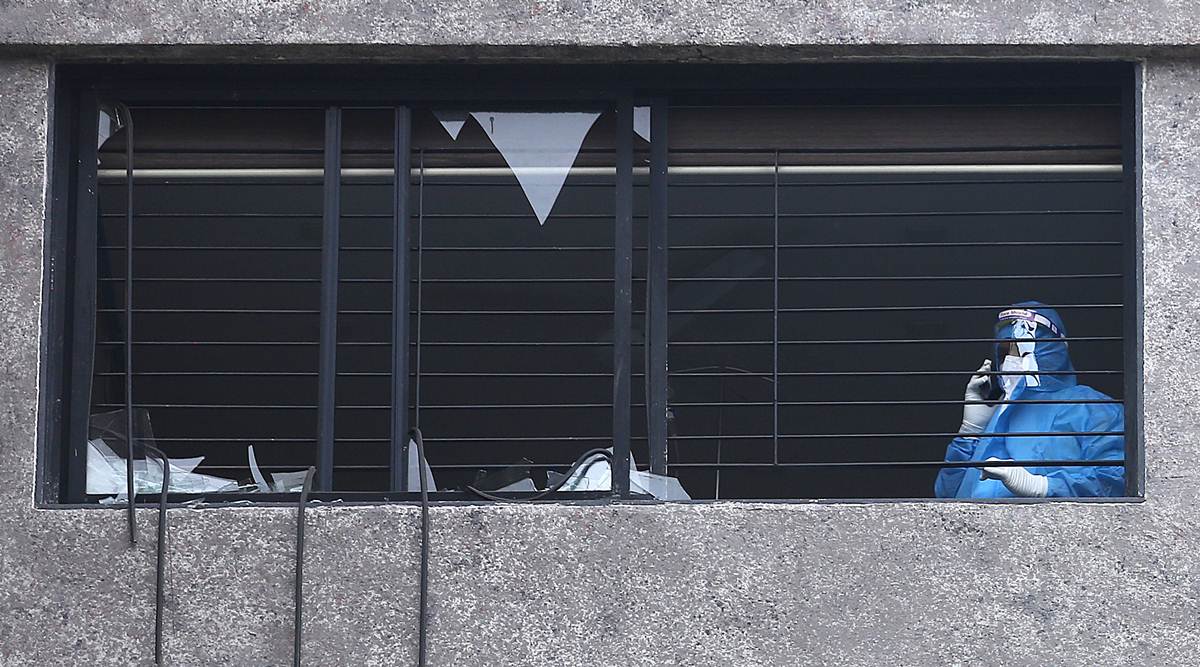24 fire incidents in hospitals since August have killed 93, mostly Covid patients. A look at how a high patient load and arrangements for the pandemic have stressed the hospital system, making it vulnerable to fire.
As many as 93 people, most of them Covid-19 patients, died in 24 incidents of fire in hospitals in India since last August. Why are these fires taking place regularly, despite the hospitals having passed fire checks and audits?
Where, when, how many
Eleven of the 24 fires were major fires and 13 were minor ones. More than half these fires occurred in March and April, when rising Covid-19 cases snowballed into a second wave. Of 59 deaths from hospital fires in the last two months, 33 deaths were reported from Maharashtra in six fire incidents and Gujarat (21) in three fire incidents.
Counting from August, 43 deaths in Maharashtra and 35 in Gujarat have been reported till date, the latest being in Bharuch where 16 patients and two nurses died.
Newsletter | Click to get the day’s best explainers in your inbox
Overstressed ICUs, ACs
Fire experts blame an “overstressed” hospital system unable to bear the rising patient load for the frequent fire incidents.
“Hospitals are increasing beds, equipment and staff to admit more Covid patients, but it is not possible to immediately expand the electrical wiring system. Medical equipment or wires carrying current beyond their capacity can overheat. That is what is happening in many hospitals. We don’t need just a fire audit, we also need an electrical audit,” said Rajendra Uchake, Chief Fire Officer in Nagpur.
In Well Treat Hospital, Nagpur, where a fire occurred in the intensive care unit (ICU) on April 10, fire officials found the hospital had added more ICU beds in a limited space, making it easier for the fire to spread besides putting a burden on the existing electrical system.
In 13 of the 24 cases, the fire began in an ICU. “These hospital ICUs did not function up to 100% capacity before the pandemic. The ventilator, equipment, air conditioners are working 24 x 7 now. It puts a pressure on the entire system,” said Santosh Warick, Director, Maharashtra Fire Services, adding that ideally air conditioners need to run for 15-16 hours and then need a cooling period.
A back-up AC is necessary, which is absent in small hospitals, he said. In a fire in Vijay Vallabh Hospital in Virar outside Mumbai, which killed 15, and in Ayush Hospital, Surat, which killed three, the fire began from the AC. In both cases, the AC had functioned for 24 hours. Uchake said instead of a cassette or window AC, air handling units (AHU) must be installed in ICUs to circulate air as they are better workhorses.
Air handling units take air from the atmosphere, “recondition” it — cooling or heating as required — and circulate it within a building or a section of the building through ducts.
In Safdarjung Hospital, Delhi, a fire mishap in March was due to an overheated ventilator machine.
More inflammable material
In Gujarat, fire officials have noted that ICUs lack cross-ventilation – this is the case with all ICUs as they are sealed for the purpose of keeping them sterile. In addition, due to Covid, there has been an increase of inflammable material in Hospitals – sanitiser spills and vapour, higher oxygen content in the air, and PPE kits, which are made of synthetic material . A fire official said “highly inflammable material such as these spread fire quickly” and leave very little time for a response.
K K Bishnoi, director, Gujarat Fire Services, said the response time of fire brigade in Welfare Hospital (Bharuch) was seven minutes. “But a high oxygen percentage and sanitiser fumes in the ICU led to a flash fire. To further reduce response time, we plan training of staff in hospitals, deputation of more fire officials in major Covid hospitals and regular auditing once a week or two,” Bishnoi said.
Bishnoi has suggested cross-ventilation in ICUs to allow fumes an outlet, which would mean unsealing a part of it. In the case of the fire in Rajkot’s Uday Shivanand Hospital and in Bharuch’s Welfare Hospital, the preliminary observation by fire department was that the fire began in an ICU which did not have any ventilation.
Former Mumbai fire officer Pratap Karguppikar said hospitals must install sprinklers. “If temperature rise to 78°C, sprinkler automatically starts dispensing 35 litres per minute. They can become first form of response,” he said.
Temporary hospitals
In makeshift hospitals, jumbo centres for Covid patients present their own challenges. They are made of highly inflammable materials, and sprinklers or fire alarms are difficult to install. Only fire extinguishers can be provided. Suresh Kakani, Additional Municipal Commissioner, said that to prevent a massive mishap, they have placed a fire engine next to the Mulund, Dahisar and BKC jumbo centres to reduce the response time to seconds.
In Dahisar jumbo centre, two minor fire incidents were reported in the last six months— one in an overheated high flow nasal cannula machine, and one in an inverter. A doctor from the centre said the capacity was for 85 ICU patients, but the rise in cases forced them to expand to 100 ICU beds. “That has put pressure on the electrical lines, equipment, everything,” the doctor said.
Source: Read Full Article





